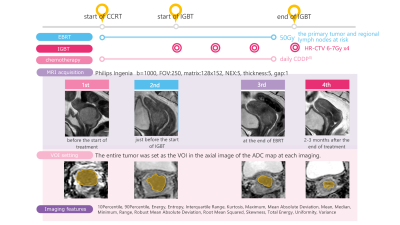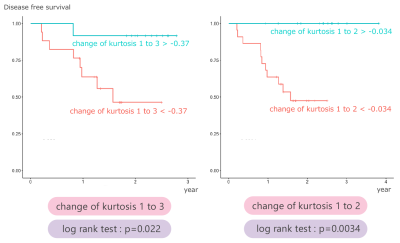Akiyo Takada1, Hajime Yokota2, Miho Watanabe Nemoto2, Takuro Horikoshi1, Koji Matsumoto1, Yuji Habu3, Hirokazu Usui3, Katsuhiro Nasu1, Makio Shozu3, and Takashi Uno2
1Radiology, Department of Radiology, Chiba University Hospital, Chiba, Japan, 2Radiology, Department of Diagnostic Radiology and Radiation Oncology, Graduate School of Medicine, Chiba University, Chiba, Japan, 3Obstetrics and gynecology, Department of Reproductive Medicine, Graduate School of Medicine, Chiba University, Chiba, Japan
1Radiology, Department of Radiology, Chiba University Hospital, Chiba, Japan, 2Radiology, Department of Diagnostic Radiology and Radiation Oncology, Graduate School of Medicine, Chiba University, Chiba, Japan, 3Obstetrics and gynecology, Department of Reproductive Medicine, Graduate School of Medicine, Chiba University, Chiba, Japan
The change rate of kurtosis in ADC histogram during chemoradiotherapy can predict the prognosis of uterine cervical cancer. By predicting the prognosis early during clinical course, a more personalized treatment can be provided.

Fig.1 Treatment course and MRI acquisition
The treatment schedule and the timing of MRI acquisition are shown.MRI examinations with DWI were performed a total of 4 times during the clinical course: before the start of treatment, just before the start of IGBT, at the end of EBRT, and 2-3 months after the end of treatment. The entire tumor was set as the VOI in the axial images of the ADC map. Eighteen histogram features were extracted from each VOI.
